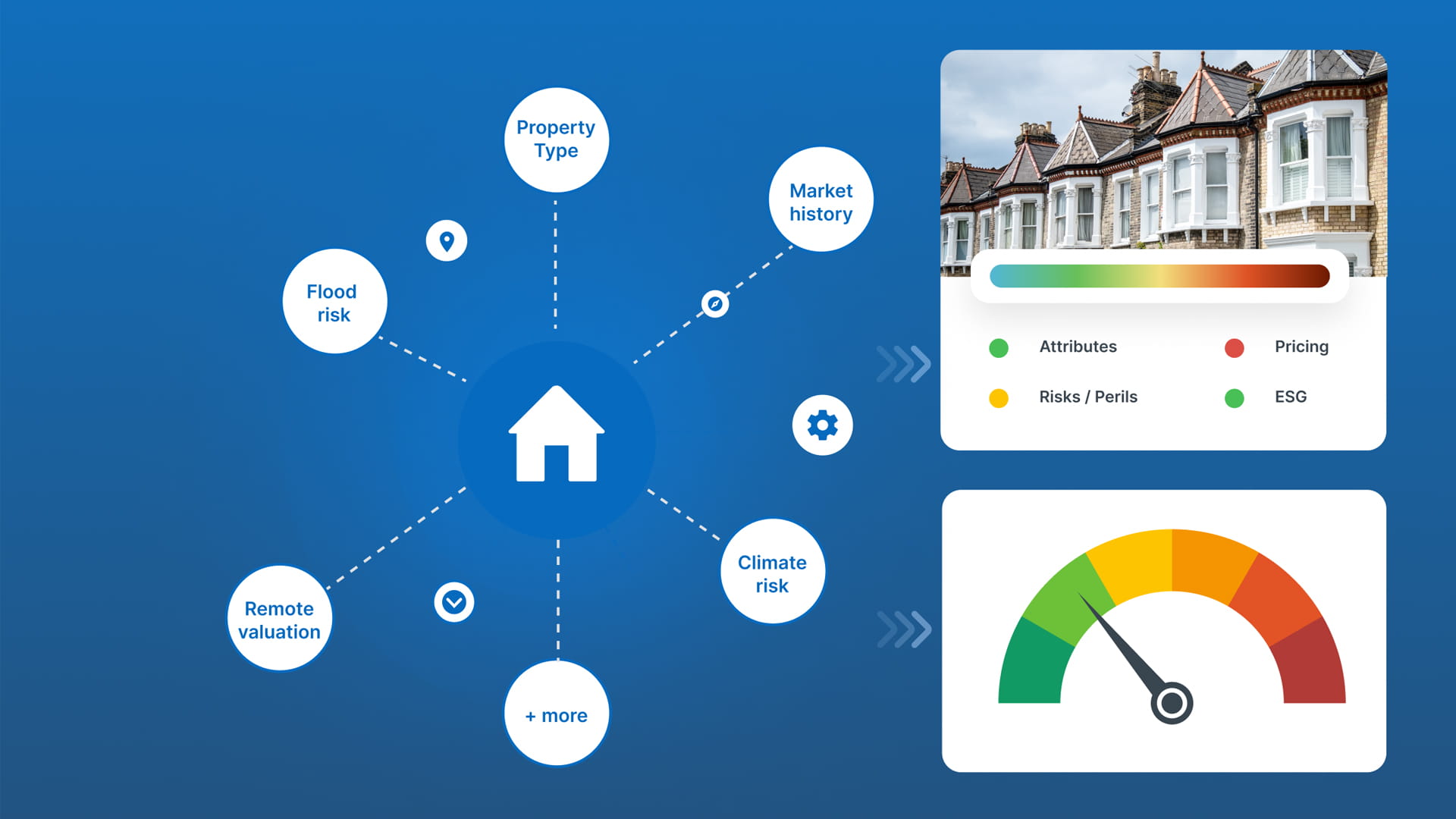PriceHubble: Data–driven trends in financial services

WhenFresh is the UK’s residential property data bureau, delivering solutions to mortgage lenders, insurers and other Big Data users. It was acquired by data-driven real estate valuations and insights solutions provider PriceHubble in 2023, paving the way for international expansion.
In partnership with Twinn, the global leader in climate risk assessment and analytics for financial services, WhenFresh by PriceHubble provides climate risk and property data to lenders and insurers.
We chatted with WhenFresh founder and CEO Mark Cunningham, now also Managing Director of PriceHubble UK, about the data trends driving change across the financial services ecosystem in the UK, Europe and beyond.

From current to future state: Climate data and regulatory requirements
WhenFresh by PriceHubble is making waves across the financial services ecosystem – and Twinn climate data is a key element of the bespoke solutions it provides. We asked Mark about the trends he’s witnessing in the use of this data, and he said there are important regulatory and operational needs.“The Bank of England requires lenders to incorporate climate risk into frameworks, accurately representing their current positions, climate ambitions and roadmap to achieving goals,” explained Mark. “The data we provide demonstrates where they are now and where they’ll be in the future.”

With insight into individual sites and broader areas, lenders are empowered to make informed climate risk decisions – whether to sandbag or improve defences, for example, or how long to hold an asset. “The data enables them to adapt policies from their current worldview to the future state,” Mark added. “By cross-referencing back books with predictive climate exposure data, they can make more informed decisions on whether to invest to purchase, invest to manage or exit altogether.”
This ability to navigate climate risk complexities has benefits for customers, too: “Lenders can alert them to previously unanticipated climate exposure, preparing them for the necessity of mitigating action,” said Mark.
This ability to navigate climate risk complexities has benefits for customers, too: “Lenders can alert them to previously unanticipated climate exposure, preparing them for the necessity of mitigating action,” said Mark.

Enabling operational advantage: Streamlining decision making
Operationally, climate data plays an important role, too: “Data guides decisions around where to lend and how to price. Lenders and insurers use it in the acceptance and rejection process and when it comes to onboarding,” Mark added. Data can segment applications into automatic acceptance and those that require additional information (such as a visit to ensure a property has flood defences).For lenders with a longer-term focus – like those specialising in equity release – accurate climate data encompassing current and future risk is a must-have. “The equity release sub-sector of the lending market is growing fast,” said Mark. “Having integrated access to property and climate risk data makes the approval process even faster and more cost-efficient. Equity release mortgages can be on a lender’s books for over 20 years. Therefore, having a firm view of changing exposure levels over a period of time is fundamental to managing risk throughout a loan’s lifetime.”
European expansion: Demand for a broader range of hazard data
Growing demand for accurate climate data isn’t confined to the UK market. But while the UK focuses mostly on flood and subsidence risks, Europe has broader needs encompassing hazards including wildfires and landslips. Indeed, one goal of the PriceHubble acquisition is to expand the use of WhenFresh internationally – and Twinn is supporting this.“The European covered bond market is cognisant of exposure embedded in mortgage products, which haven’t had this visibility before,” Mark explained. “We’re trying to ensure the data is usable across the totality of the portfolio, so we can drill into climate exposure in any location.”
How is Twinn helping? “Twinn’s expertise and data quality are helping us scale our approach across Europe, and some big portfolio management companies coming on board soon.”

Ongoing innovation: Enabling ‘decision as a service’
What does Mark think the future holds? “We’re working on data blocks – pre-canned, best-of-breed selections to answer a particular problem in response to market demand, whether that’s a green loan company or a lender-manager of a buy-to-let landlord group.”These data packages will combine climate risk data with property information, title data and repairs information to give clients the full picture – right down to repair and rebuild costs in the event of a weather event (like a flood).
“The Twinn model might show a location has a higher-than-normal flood risk, but if people know the building is made of yellow Cotswold stone, they’re not as worried about flooding,” Mark explained. “On the flipside, if they know it’s built using modern methods of construction, they can take informed and proactive action.”
Twinn has been partnering with WhenFresh by PriceHubble for 3 years, and Mark is keen for the collaboration to continue. Why? “Expertise is key – and data quality is paramount. Twinn’s accurate, science-led climate data helps enable what I call ‘decision as a service’ – something that’s easily consumable by non-climate experts like risk officers and operations specialists,” he concluded.
